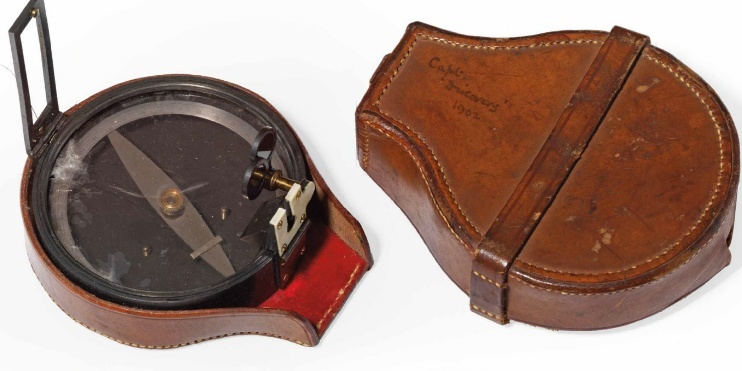Discovery Point is trying to raise up to £20,000 to bring a vital part of the story of Captain Scott’s South Pole expeditions home to Dundee.
The compass used by the explorer to navigate on the Discovery and Terra Nova treks in the Antarctic is to be auctioned in London next month.
The historical artefact is expected to fetch between £15,000 and £20,000 when it is offered as part of the travel, science and history sale by Christie’s.
Gill Poulter, heritage director at Discovery Point, said: ”We would love to have it here in Dundee and to be able to show it with the Discovery.”
She continued: ”We have the catalogue and are finalising our thoughts about what we may be interested in as there are other items in the auction that we are also thinking about.
”It would be absolutely fantastic to have Scott’s marching compass at Discovery Point because it is so important to Scott’s story. As a museum we are able to apply for funds to bid for items such as this one that would enhance our collection and our curators are busy working out how to apply for funds that would support our bid.”
Robert Falcon Scott led two expeditions to the Antarctic the Discovery from 1901-04 and the ill-fated Terra Nova expedition from 1910-13. His party reached the South Pole on January 17 1912, only to find that they had been beaten there by Roald Amundsen’s Norwegian expedition.
On their return journey, Scott and his four comrades all perished from a combination of exhaustion, starvation and extreme cold.
Christie’s auction marks the centenary of the Terra Nova expedition and being offered is the navigation compass carried by Scott on his sledging journeys in both ventures.
Inscribed with ink on the cover of the leather case ”Capt. ‘Discovery’ 1902”, it was was one of many objects returned to Scott’s widow following his fatal journey.
Scott is reported to have had difficulties with compasses in the trying conditions of the Antarctic, as readings could be variable. He wrote at the time ””these compasses are not to be relied upon where the directive force is so small…”.
Prints by Herbert Ponting of the Antarctic during the Terra Nova expedition are also being auctioned, as is Tryggve Gran’s famous photograph of Scott’s final resting place taken on November 12 1912. It has an estimated value of £10,000 to £15,000.
The sledging harness used by Scott’s contemporary Ernest Shackleton from his Nimrod expedition in 1907-09 is another item being sold. Shackleton said it saved his life on numerous occasions when he fell into crevasses, and it is expected to fetch between £15,000 and £20,000.
In a separate auction, a watercolour by the Scottish pioneer Antarctic explorer William Burn Murdoch in the 1890s of three whalers with icebergs and penguins is being sold by Bonham’s in London in December.
Murdoch was the official artist on the Dundee whaling expedition in 1892-93 led by Captain Alexander Fairweather and William Speirs Bruce. The painting is valued at £1,000 to £1,500.
